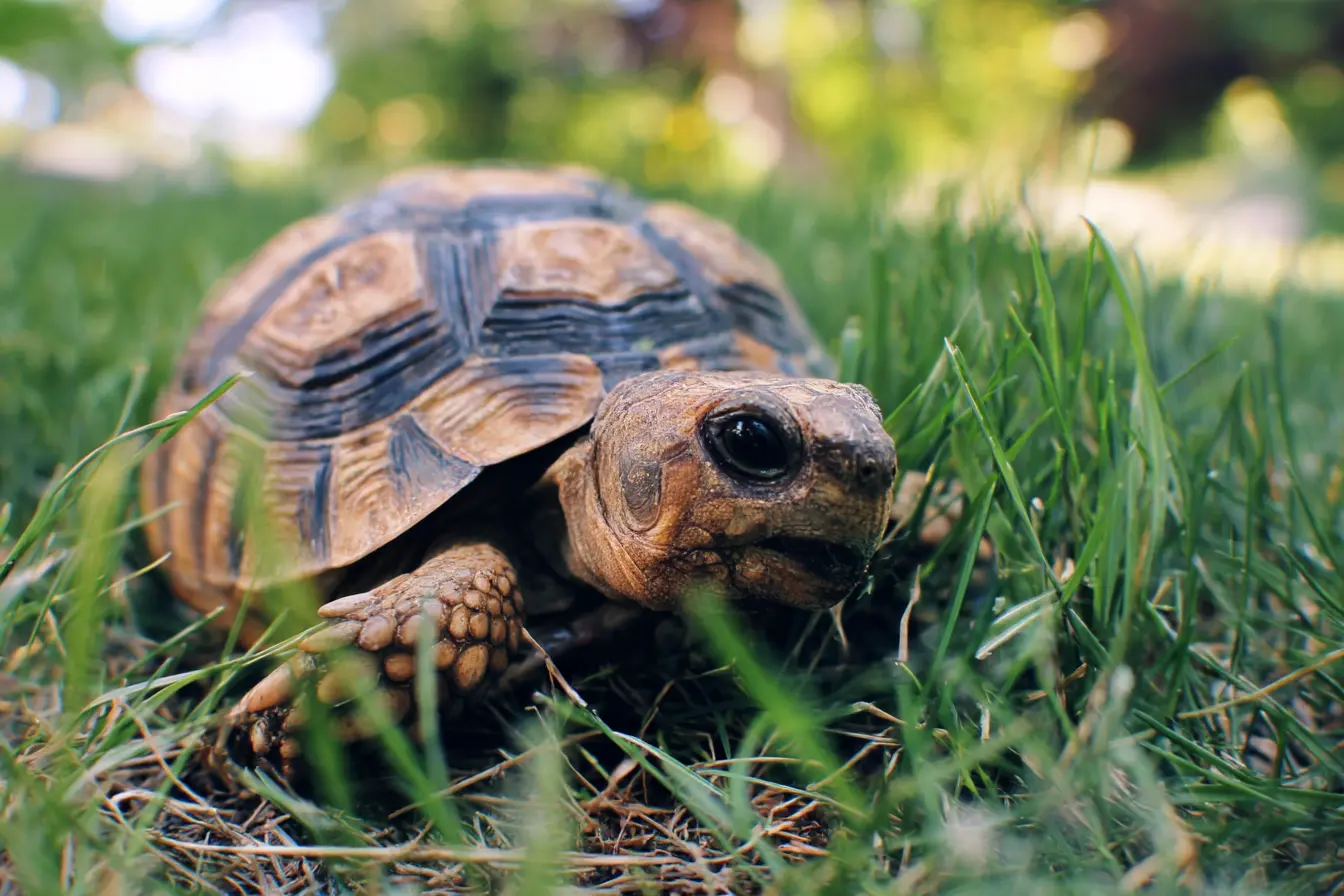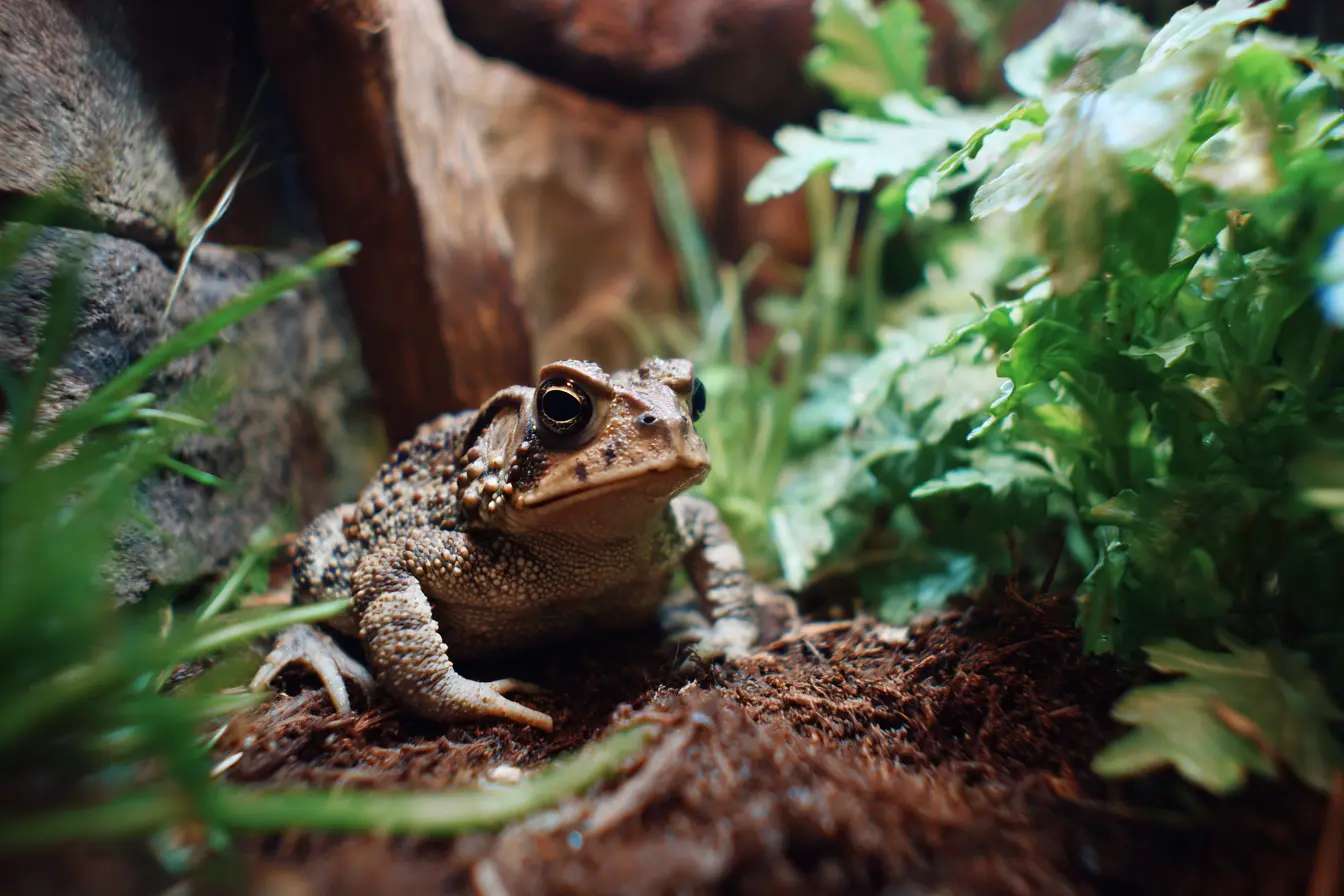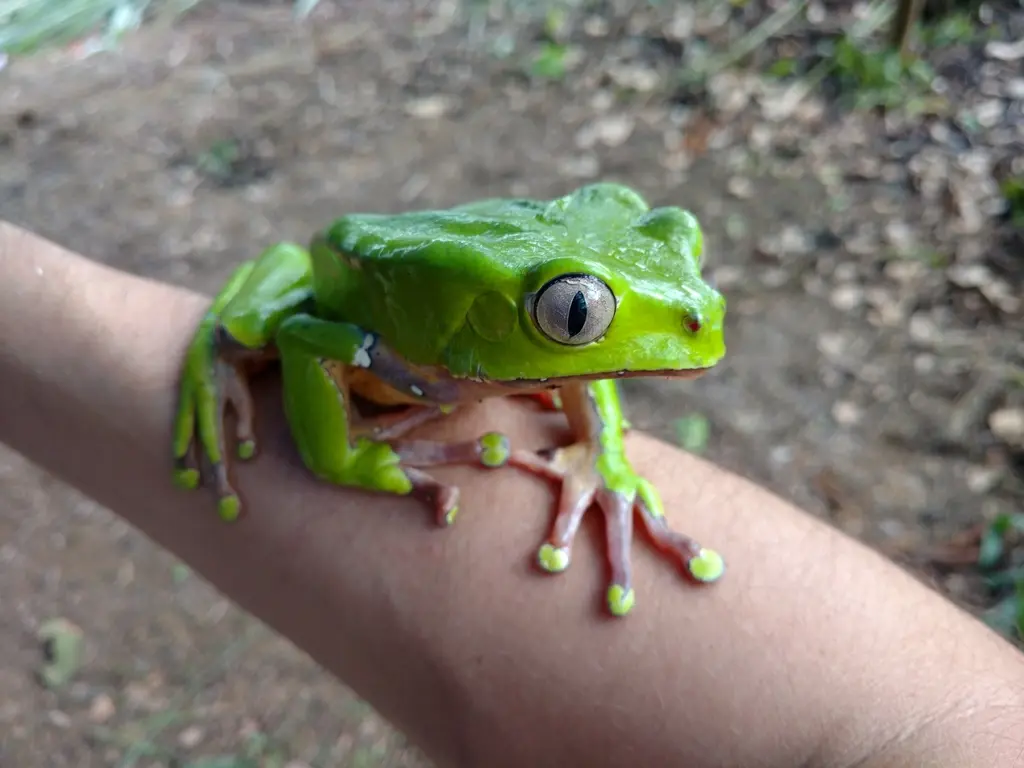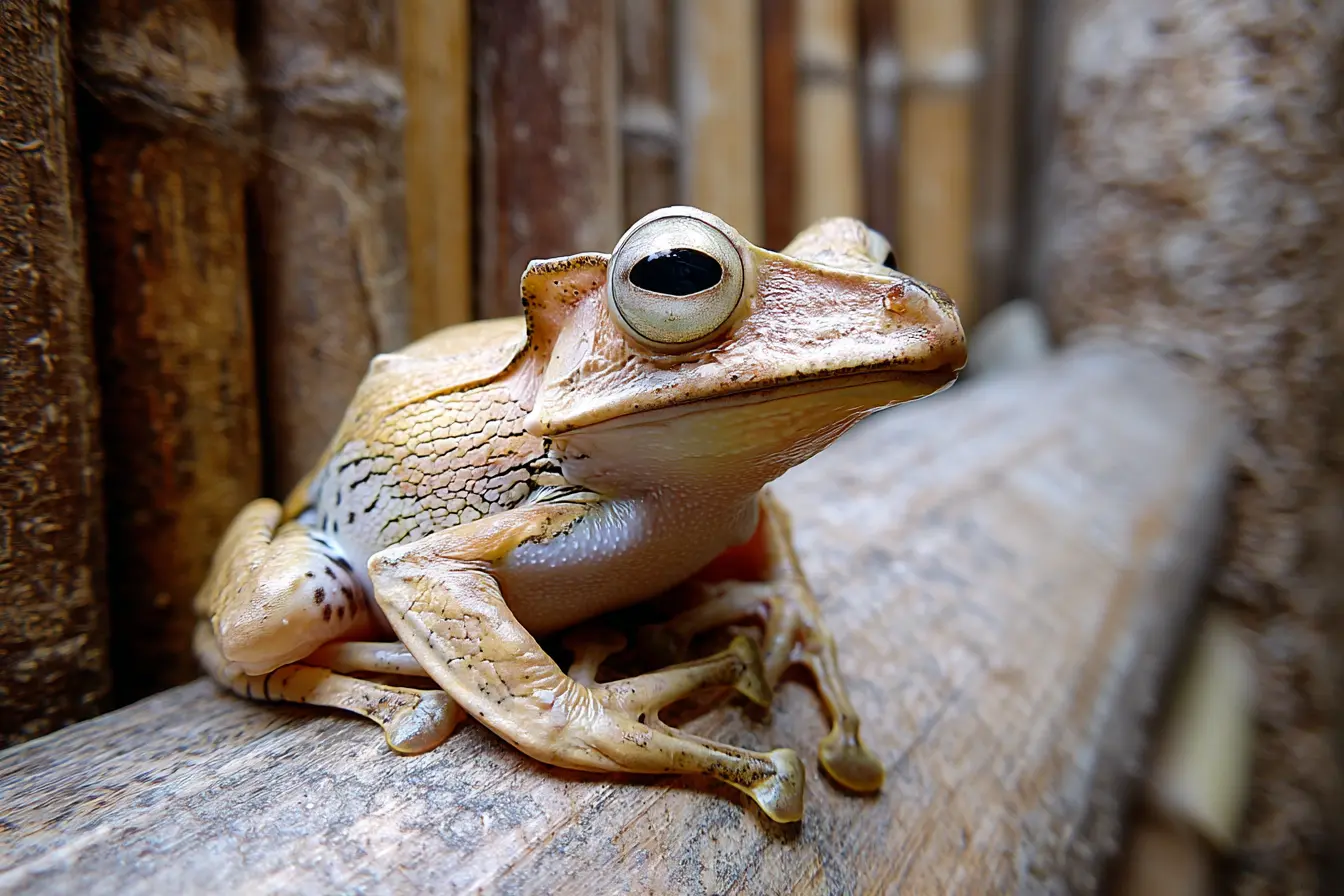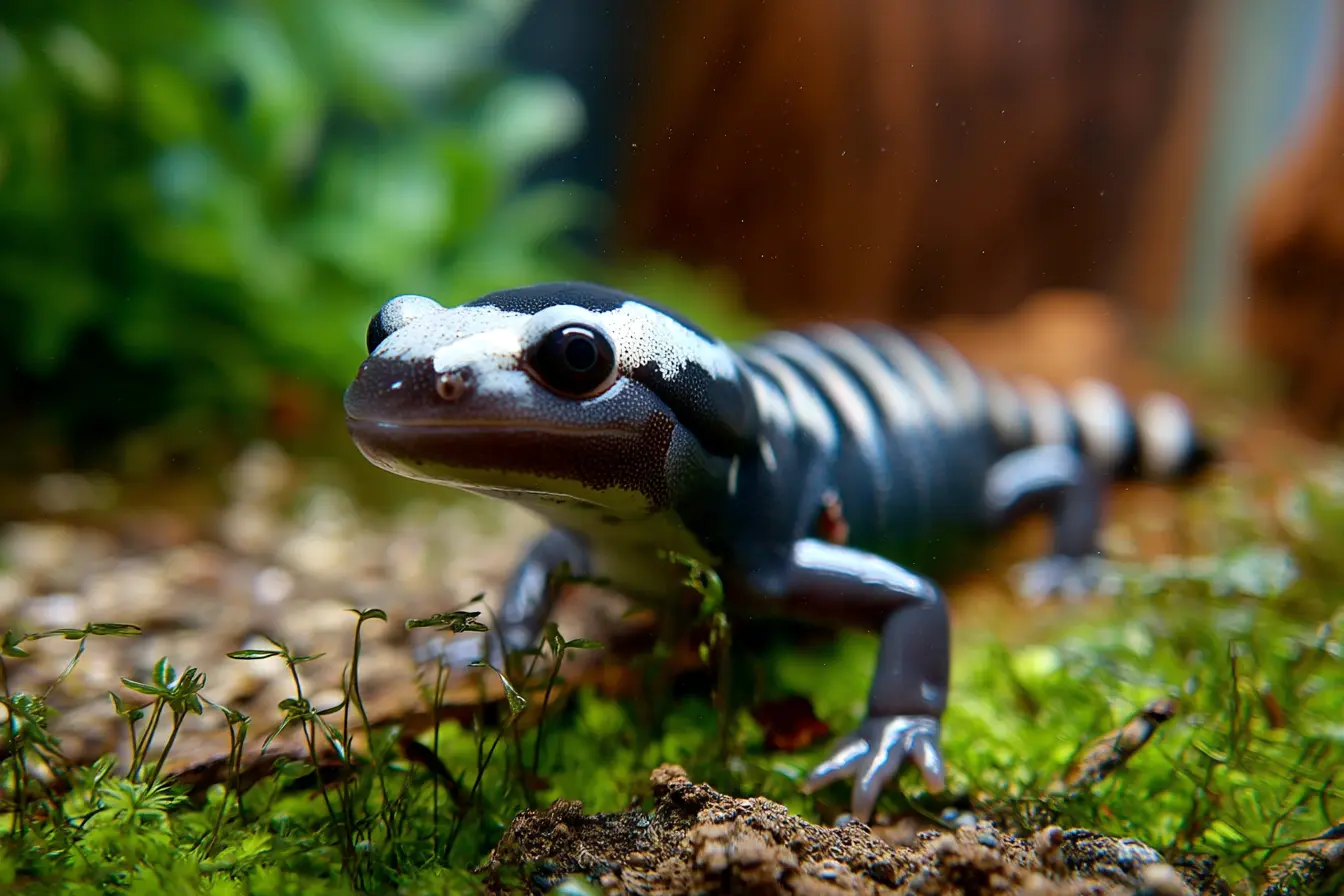
Keeping the Marbled Salamander: A Comprehensive Guide
The marbled salamander (Ambystoma opacum) is a striking and popular species among amphibian enthusiasts. Native to the eastern United States, this terrestrial mole salamander is known for its bold black-and-white or silvery markings, secretive behaviour, and relatively simple care requirements. Its unique autumn breeding habits and attractive appearance make it a rewarding choice for beginners and experienced herpetologists alike.
This guide provides a comprehensive overview of marbled salamander care in captivity.
Physical Characteristics
Size
- Adults typically reach 9–12.5 cm (3.5–5 inches) in length.
- Females tend to be larger and more robust than males.
Lifespan
- With proper care, marbled salamanders can live 8–10 years, with some individuals reaching 12 years or more.
Colouration and Markings
- Glossy black bodies adorned with bright white or silver crossbands in adults.
- Juveniles are dark with silvery speckles and develop full adult banding after metamorphosis.
- Females generally have more greyish bands, while males tend to display brighter white markings.
Sexual Dimorphism
- Females are bulkier, especially during breeding season.
- Males have more vivid colouration and a more swollen cloacal area when breeding.
Legal Considerations and Ethics
Always opt for captive-bred specimens, which are healthier and do not contribute to the decline of wild populations.
Housing and Enclosure Setup
Marbled salamanders are terrestrial, spending most of their time hidden beneath logs, leaves, or burrowed underground.
Enclosure Size
- A single adult can be comfortably housed in a 40-litre (10-gallon) terrarium.
- For pairs or small groups, a 75-litre (20-gallon) enclosure is recommended, though males may be territorial during breeding season.
Substrate
- Use a deep, moisture-retentive substrate such as:
- Organic topsoil
- Coconut fibre
- A mix of soil and sphagnum moss
- Leaf litter or damp moss on top provides additional hiding and burrowing opportunities.
Hides and Decor
- Provide multiple hiding places using cork bark, logs, or slate pieces.
- A cool, damp retreat and a slightly drier area should be available within the enclosure to allow for natural thermoregulation.
Temperature and Humidity
- Temperature: 16–22°C (60–72°F). They prefer cooler temperatures and should not be exposed to prolonged heat above 24°C (75°F).
- Humidity: 60–80%. Mist lightly several times a week but avoid oversaturation.
- Seasonal cooling can be beneficial and mimic their natural cycle.
Lighting
- Marbled salamanders are nocturnal and do not require UVB lighting.
- Ambient room light or a low-wattage LED for a day-night cycle is sufficient.
- If kept with live plants, low-level full-spectrum lighting can be used.
Diet and Feeding
Marbled salamanders are insectivorous with a preference for small, soft-bodied prey.
Suitable Food Items
- Small earthworms (staple)
- Crickets (appropriately sized)
- Dubia roaches (small nymphs)
- Black soldier fly larvae
- Isopods and springtails (for bioactive enclosures)
- Occasional waxworms as a treat
Feeding Schedule
- Juveniles: Feed every day or every other day.
- Adults: Feed 2–3 times per week.
- Feed at dusk or early evening to align with their natural activity cycle.
Supplementation
- Dust prey with calcium once per week.
- A high-quality multivitamin supplement every 2–4 weeks is beneficial, especially for juveniles.
Handling and Behaviour
Marbled salamanders are secretive and prefer minimal handling.
Behaviour
- Primarily nocturnal and spend much of the day hidden.
- Emerge during the evening or after misting to hunt.
- Males may become more active and visible during breeding season.
- Generally solitary, though they can be kept communally if adequate space and hides are provided.
Handling
- Avoid frequent handling, as their delicate skin absorbs oils and contaminants.
- If necessary, handle with wet, clean hands or nitrile gloves.
- Always wash hands before and after contact.
Health and Common Issues
Marbled salamanders are hardy, but like all amphibians, they are sensitive to environmental changes.
Common Health Problems
- Skin infections: Resulting from unsanitary conditions or prolonged stress.
- Obesity: From overfeeding, especially on high-fat insects like waxworms.
- Dehydration: From inadequate humidity or improper substrate.
- Parasites: More common in wild-caught individuals.
Preventative Care
- Maintain clean, cool, and humid conditions.
- Provide a varied diet with appropriate supplementation.
- Quarantine new animals before introducing to established setups.
- Regularly spot-clean enclosure and change substrate periodically.
Breeding Marbled Salamanders
Breeding in captivity is achievable but requires seasonal cycling.
Breeding Cues
- Lower enclosure temperatures to simulate autumn conditions.
- Provide a moist terrestrial setup with plenty of hiding spots.
- Males will display courtship behaviours, including tail undulations and nudging.
Reproduction
- Females lay 50–100 eggs under moist logs or in burrows, often near seasonal water sources.
- In the wild, eggs hatch after rainfall floods the nesting site; in captivity, hatching can be triggered by gently flooding the enclosure.
Rearing Larvae
- Larvae are aquatic and require a separate setup with dechlorinated water.
- Feed larvae with live foods such as baby brine shrimp, daphnia, or finely crushed fish flakes.
- Metamorphosis occurs within 6–12 weeks, after which juveniles transition to a terrestrial environment.
Conclusion
Marbled salamanders are charming and beautiful amphibians well-suited to naturalistic terrestrial enclosures. Their striking appearance, manageable care requirements, and fascinating life cycle make them a standout species for any amphibian keeper.
With proper care, including cool temperatures, high humidity, and a balanced diet, these salamanders can thrive in captivity for many years. For those seeking an attractive and relatively low-maintenance terrestrial amphibian, the marbled salamander is an excellent choice.
Vets near you
Speciality vets
- Aquatics vet specialists
- Birds vet specialists
- Camelids vet specialists
- Cats vet specialists
- Cattle vet specialists
- Deer vet specialists
- Dogs vet specialists
- Equines vet specialists
- Exotic vet specialists
- Goats vet specialists
- Pigs vet specialists
- Poultry vet specialists
- Sheep vet specialists
- Small Mammals vet specialists
- Wild vet specialists
